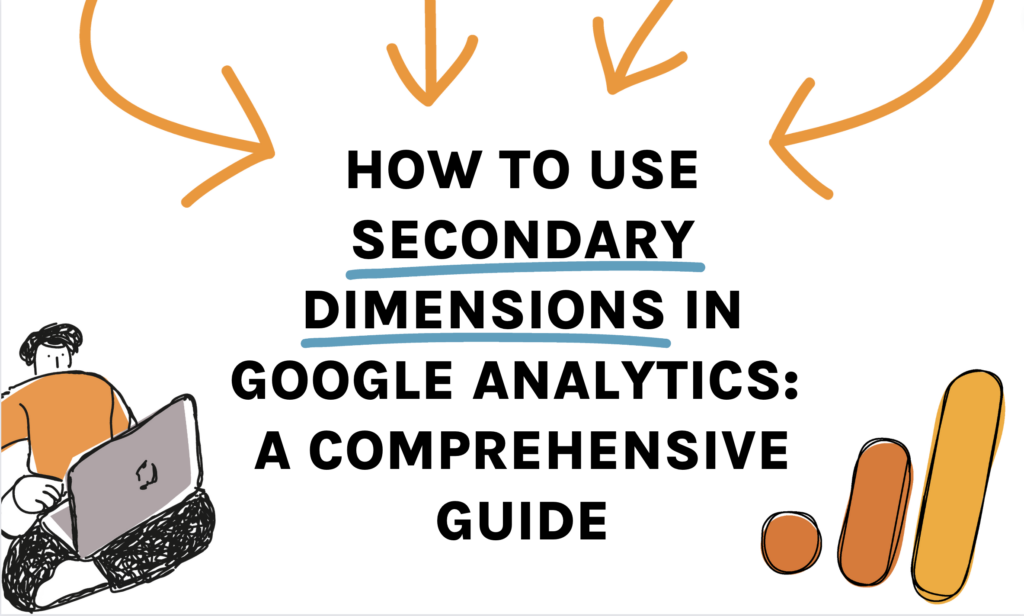Understanding the Idea of a 'Secondary Dimension' in Google Analytics: What Does It Mean?
Understanding the Idea of a 'Secondary Dimension' in Google Analytics: What Does It Mean?
Blog Article
Navigating the Midst of Additional Dimension in Google Analytics: An In-depth Exploration on Its Performance
Additional dimensions, though relatively straightforward at first glance, harbor a wide range of untapped potential waiting to be harnessed. As we begin on this journey to discover the nuanced capability of additional dimensions, we will uncover exactly how this attribute can illuminate patterns, reveal connections, and ultimately lead the way for educated decision-making in the electronic landscape (what is a “secondary dimension” in google analytics?).
Recognizing Second Dimensions in Google Analytics

Recognizing how secondary measurements work is important for leveraging the complete power of Google Analytics. These dimensions help you address much more complicated questions regarding customer habits and the effectiveness of your internet site content and marketing initiatives. As an example, you can use second dimensions to analyze which internet browsers or tools are most typically made use of by site visitors who purchase, or to contrast the bounce prices of different traffic resources. By incorporating primary metrics with secondary dimensions, you can gain useful understandings that drive notified decision-making and optimization strategies - what is a “secondary dimension” in google analytics?.
Leveraging Additional Measurements for Data Evaluation
Structure upon the fundamental understanding of exactly how second dimensions enhance data evaluation in Google Analytics, the utilization of these extra layers of details comes to be paramount in extracting useful understandings for educated decision-making and optimization techniques. By leveraging additional dimensions, analysts can dive deeper right into the efficiency metrics by adding more context to the key measurements, therefore discovering concealed patterns and correlations that may not appear at initial glimpse. This much deeper level of analysis enables organizations to better recognize customer habits, determine trends, and determine locations for renovation.
Moreover, additional dimensions supply an even more detailed sight of the data, permitting division based upon different specifications such as demographics, tools, web traffic resources, and more. This division assists in an extra granular evaluation, allowing organizations to tailor their methods and projects to details target market segments for enhanced targeting and customization. Essentially, the calculated use additional measurements encourages companies to make data-driven decisions that drive development and success in the electronic landscape.
Advanced Techniques for Additional Measurement Application
Discovering elaborate approaches to harness the complete capacity of secondary dimensions in Google Analytics boosts the deepness and elegance of data evaluation for tactical decision-making. One advanced technique for implementing secondary dimensions is the usage of custom dimensions. In addition, incorporating second measurements with sophisticated sectors can offer even more granular understandings by using numerous layers of division to the data.
Interpreting Insights With Additional Measurements

When translating insights through secondary dimensions, it is essential to take into consideration the context of the data and just how various measurements interact with each other. Understanding which details website traffic resources lead to higher conversion rates or original site identifying which tools individuals favor for making acquisitions can provide workable insights for enhancing marketing campaigns and boosting general web site performance. By meticulously taking a look at the information with secondary measurements in mind, organizations can make enlightened choices that drive significant results and boost their electronic presence.
Enhancing Efficiency With Additional Dimensions

One essential means to enhance performance with additional measurements is by segmenting data more granularly. This permits you to isolate particular aspects that may be influencing your metrics and get a far better understanding of what drives success or failing in your digital campaigns. By integrating additional measurements such as 'gadget classification' and 'touchdown web page,' you can identify which device types are most effective for specific landing web pages, enabling that site you to customize your methods as necessary.
In addition, using second dimensions can assist you determine fads, patterns, and correlations that might not appear when examining information with primary measurements alone. This much deeper level of evaluation can lead to even more enlightened decision-making and ultimately boost the total performance of your web site or digital marketing campaigns.
Final Thought
To conclude, second dimensions in Google Analytics play an essential duty in boosting information analysis and offering much deeper insights into web site efficiency. By Web Site making use of advanced techniques and analyzing the data successfully, organizations can enhance their techniques and improve total efficiency. Understanding the performance of secondary measurements is vital for making educated choices and driving success in the digital landscape.
By leveraging second dimensions, analysts can dive deeper into the efficiency metrics by including more context to the key measurements, thus uncovering hidden patterns and relationships that might not be evident at very first look. One sophisticated technique for executing second measurements is the use of personalized dimensions.Having actually grasped sophisticated techniques like custom dimensions and regex for second measurement execution in Google Analytics, the next crucial step is translating the valuable insights obtained with these innovative information division approaches. Analyzing understandings with second measurements involves analyzing the partnerships between the key and secondary measurements picked, discovering patterns, patterns, and connections that may not be instantly obvious when looking at the information in its whole.When interpreting understandings via secondary measurements, it is crucial to think about the context of the information and how various measurements communicate with each other.
Report this page